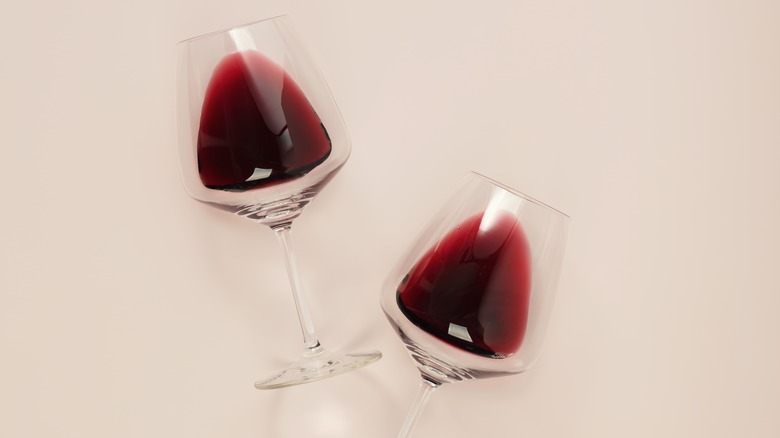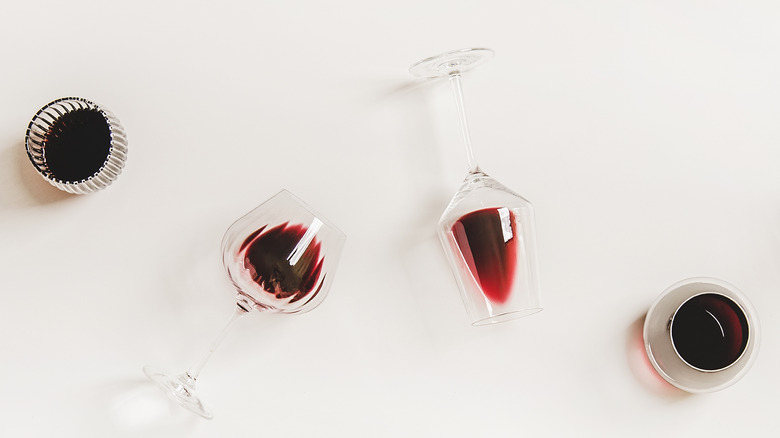What Are Wine Twins And Why Are They So Hard To Tell Apart?
If you've ever had the chance to participate in a blind tasting, you'll know that evaluating wine can be hard work. Given that labels are hidden, this forces tasters to rely strictly on their senses. Only after carefully observing, smelling, and sampling, can an overall idea of the wine be constructed. What can make the experience especially challenging is when two totally different wines display similarly. These so-called "wine twins" can stump even the most experienced sommeliers, but what exactly makes these duos so hard to differentiate?
Aside from being an exercise in testing our knowledge, blind tastings can help us avoid jumping to conclusions about a vintage. In fact, The New Yorker reports that oftentimes contextual influences like a wine's labeling or even its price tag can impact our perception of wine even before we taste it. That said, it's only half of the equation. Since differences might lie in slight nuances, evaluating a glass might seem next to impossible for the untrained palate.
Of the thousands of wines produced, it's only natural that there might be some overlap. Analogous based on the varietal or factors like location and modifications during winemaking, Forbes explains that it's also these same factors that can create distinctions among wines. As for wine twins, the reasoning behind their resemblances stems a bit deeper.
Sharing the same DNA among other things
With nearly identical aromas, mouthfeel, and taste, the reason why wine twins can be so hard to tell apart is that they are often the byproduct of similar environments and processes. According to Wine Enthusiast, the chemical makeup in Albariño can lead it to be mistaken for Pinot Gris, whereas the similar climates and terroir can allow an Argentinian Malbec to be confused with a California Zinfandel. Even similar winemaking processes relating to aging can cause wines like Sangiovese and Nebbiolo to easily be jumbled.
So, how do you tell them apart? Often distinguishing wine twins requires a very diligent eye and palate. Colors may vary slightly, but closely analyzing the aromas and flavors will give larger clues. Beyond examining primary aromas, Wine Enthusiast suggests looking beyond fruitiness and instead considering how it presents (as fresh or dried) in a wine. Likewise, Somm TV explains that considering minerality or even secondary and tertiary aromas and flavors like yeast or earthiness can also relay information about the post-formation and maturation process, which might better highlight differences.
Basically, the best thing you can do in order to become a pro at differentiating wine twins is practice tasting. Wine Folly recommends mastering the profiles — like the level of sweetness, aromas, tannins, alcohol, and body — of "classic wines" that will help you learn to decipher between similar vins like Chardonnay and Chenin or Cabernet Sauvignon and Tempranillo. We'll grab the corkscrew, you grab the bottle!

